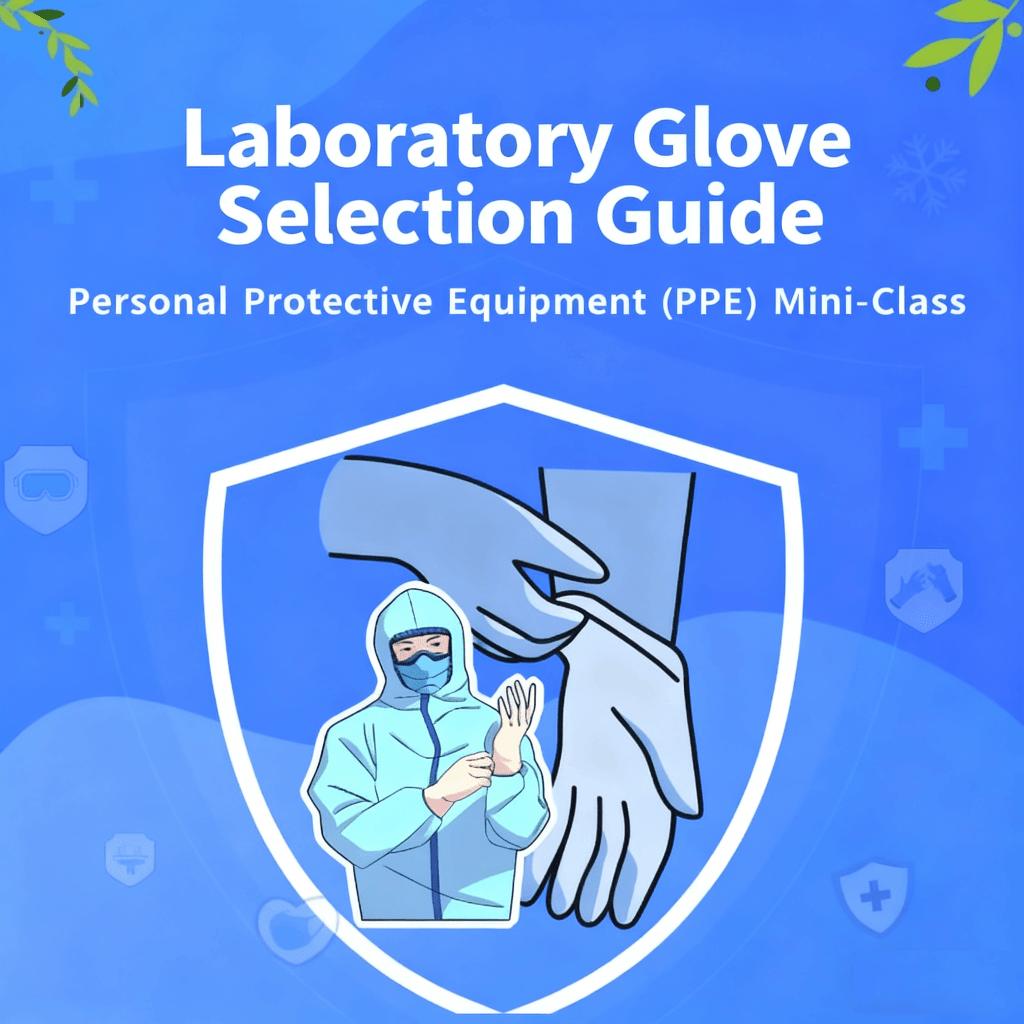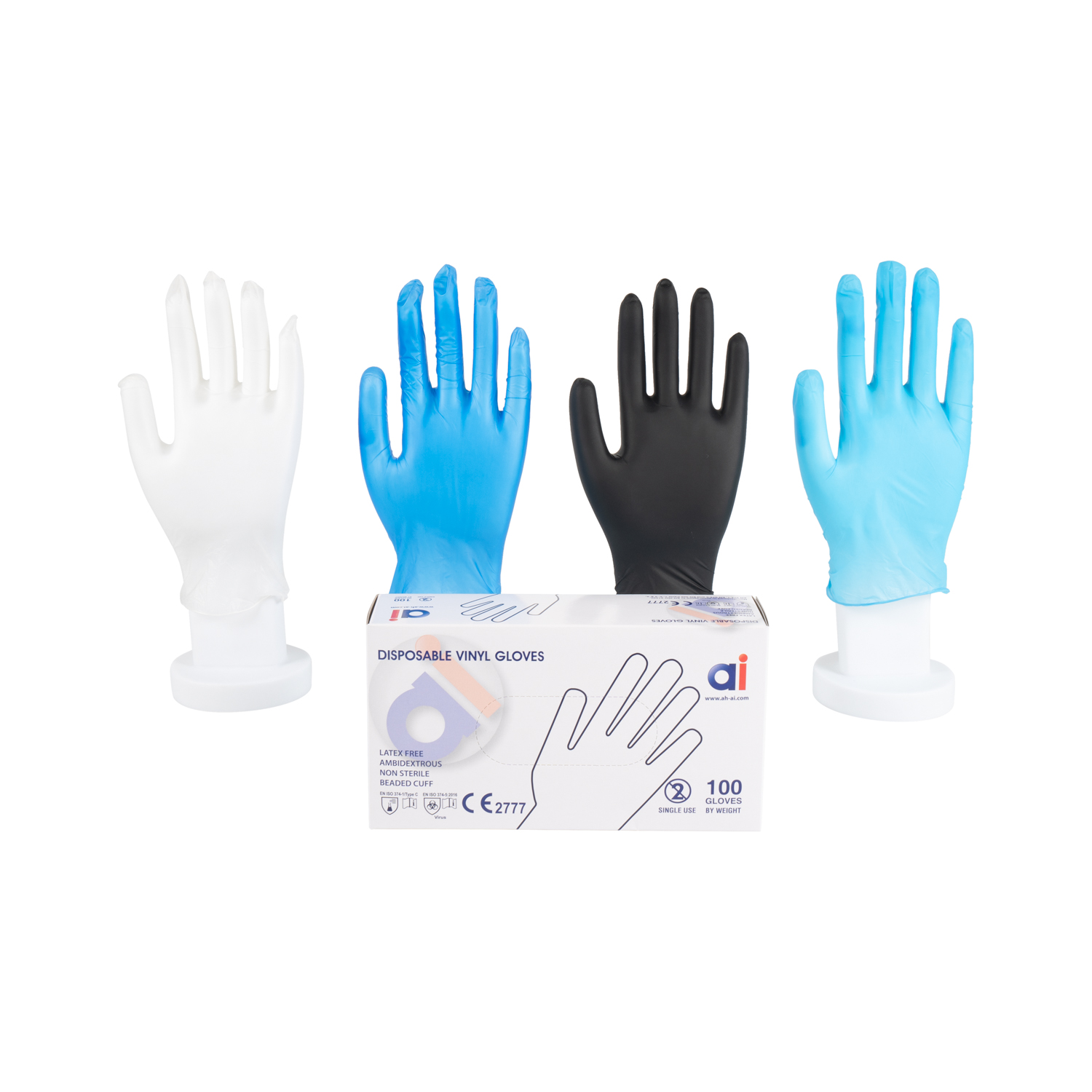
Choosing the right examination gloves requires a comprehensive consideration of multiple factors, including your needs, usage scenarios, and material compatibility. The following are some specific considerations:
1.Material First:
Avoid Allergies and Match Your Protection Needs. The core material of examination gloves determines their compatibility and protective capabilities. Common materials and their applicable scenarios are as follows:
Latex gloves:
Advantages include excellent elasticity, a close fit, and are suitable for delicate procedures (such as medical examinations and laboratory sampling). They are also cost-effective.
Disadvantages include: Approximately 1%-3% of people may be allergic to natural latex proteins (manifested by redness and itching on the hands), and weak chemical resistance (not suitable for contact with strong acids, alkalis, and organic solvents).
Suitable for: Those without latex allergies and those requiring frequent delicate procedures.
Nitrile gloves:
Made of synthetic rubber, they contain no latex proteins and are suitable for those with latex allergies. They also offer superior chemical resistance (such as alcohol, oils, and weak acids and alkalis) than latex, providing more comprehensive protection.
They are slightly less elastic than latex, but still offer a good fit, making them suitable for medical, laboratory, and industrial light protection applications. Suitable for those with latex allergies and those working with small amounts of chemicals or oil.
PVC (polyvinyl chloride) gloves:
They are low-cost and inexpensive, but they lack elasticity, poor fit, and are a hard material, making them prone to heat buildup on hands when worn for extended periods.
They offer average chemical resistance and are suitable for short-term, low-risk situations (such as household cleaning and simple protection in non-sterile environments).
Suitable for basic protection on a budget where elasticity and fit are not a priority.
Other specialty materials: such as vinyl gloves (which are thinner and offer less protection, and are often used for disposable, low-risk situations), can be selected based on specific needs.
2.Select the right size:
Ensure a snug fit that doesn’t interfere with operation. An inappropriate size can hinder operation (too tight, too loose, and slippery).Choose based on the size of your palm:
Measuring method: Use a soft tape measure to circle the widest part of your palm (the horizontal distance from the base of your thumb to the base of your pinky finger). Refer to the brand’s size chart to select the right size (typically: S is approximately 18-20cm, M is 20-22cm, and L is 22-24cm).
Try it on: A good fit means your fingers feel comfortable, your fingertips don’t feel overly swollen, and your wrists are comfortable without slipping.
3.Identify the intended use:
Match “functional attributes” to your needs. Different scenarios require different levels of protection and sterility, so choose a specific glove:
Medical/clinical settings: Choose sterile gloves (labeled “sterile” on the packaging), preferably made of latex or nitrile (which offer excellent elasticity and do not interfere with delicate procedures like palpation and injections).
Laboratory/chemical contact: Choose nitrile gloves (which offer strong chemical resistance) and avoid latex (which is easily corroded by chemical reagents).
Daily cleaning/home care: Choose PVC or nitrile gloves (which are cost-effective and do not require sterility). If you have sensitive hands, choose powder-free gloves.
4.Pay attention to details: Enhance the wearing experience.
Powder-free: Traditional gloves are often powdered for easier donning, but powder can irritate the skin or contaminate the operating environment (e.g., in laboratories and medical settings). We recommend choosing “powder-free” gloves (which are often treated with chlorine for a smoother, easier-to-wear feel).
Thickness: Thinner gloves (0.08-0.12mm) are suitable for delicate operations (such as injections and sampling) and offer a more sensitive feel. Thicker gloves (0.15mm and above) offer greater protection and are suitable for contact with rough objects or small amounts of chemical reagents.
Stretchability: For repeated wear, choose a material with good stretchability (latex or nitrile) to avoid breakage after repeated stretching.
In summary:
Determine if you are allergic to latex → eliminate or select a suitable material (nitrile/PVC for allergies);
determine the use scenario (medical/laboratory/daily use) → determine whether sterility and chemical resistance are required;
measure your palm size → select a size that fits you best; pay attention to details such as powder-free and thickness → enhance comfort.
By following these steps, you can generally choose the right examination gloves for your needs, balancing protection and user experience.





发表回复